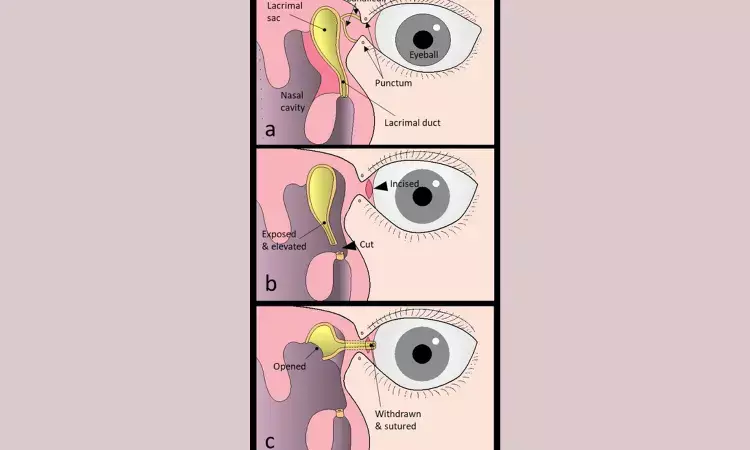- Home
- Medical news & Guidelines
- Anesthesiology
- Cardiology and CTVS
- Critical Care
- Dentistry
- Dermatology
- Diabetes and Endocrinology
- ENT
- Gastroenterology
- Medicine
- Nephrology
- Neurology
- Obstretics-Gynaecology
- Oncology
- Ophthalmology
- Orthopaedics
- Pediatrics-Neonatology
- Psychiatry
- Pulmonology
- Radiology
- Surgery
- Urology
- Laboratory Medicine
- Diet
- Nursing
- Paramedical
- Physiotherapy
- Health news
- Fact Check
- Bone Health Fact Check
- Brain Health Fact Check
- Cancer Related Fact Check
- Child Care Fact Check
- Dental and oral health fact check
- Diabetes and metabolic health fact check
- Diet and Nutrition Fact Check
- Eye and ENT Care Fact Check
- Fitness fact check
- Gut health fact check
- Heart health fact check
- Kidney health fact check
- Medical education fact check
- Men's health fact check
- Respiratory fact check
- Skin and hair care fact check
- Vaccine and Immunization fact check
- Women's health fact check
- AYUSH
- State News
- Andaman and Nicobar Islands
- Andhra Pradesh
- Arunachal Pradesh
- Assam
- Bihar
- Chandigarh
- Chattisgarh
- Dadra and Nagar Haveli
- Daman and Diu
- Delhi
- Goa
- Gujarat
- Haryana
- Himachal Pradesh
- Jammu & Kashmir
- Jharkhand
- Karnataka
- Kerala
- Ladakh
- Lakshadweep
- Madhya Pradesh
- Maharashtra
- Manipur
- Meghalaya
- Mizoram
- Nagaland
- Odisha
- Puducherry
- Punjab
- Rajasthan
- Sikkim
- Tamil Nadu
- Telangana
- Tripura
- Uttar Pradesh
- Uttrakhand
- West Bengal
- Medical Education
- Industry
Researchers develop new surgical procedure for treating Epiphora

A team of otolaryngologists and ophthalmologists at Toho University Sakura Medical Center has developed a new procedure, 'conjunctivoductivo-dacryocystorhinostomy' for treating Epiphora.
Under normal conditions, tears in the eyes are drained into the lacrimal sac through small openings called the upper and lower puncta located at the inner corner of the eye (called medial canthus). The tears go through small ducts called the superior and inferior canaliculi and then flow through the lacrimal sac and the nasolacrimal duct, and finally into the nose (Figure 1a). Obstruction in any part of the above-mentioned passage is the most common cause of watery eyes or epiphora. Epiphora affects the quality of life (QOL) of patients. When both the upper and lower canaliculi are obstructed, the tear fluid cannot be drained into the nose, resulting in epiphora. Although the cause of canalicular obstruction cannot be identified in many cases, it is thought to be associated with aging, trauma, tumors, and oral anticancer medication.
A minor surgery to enlarge the canaliculus by inserting a silicone tube is the common treatment to remove the obstructions. When the canaliculus is reoccluded or cannot be kept open, A Jones tube placement is considered, which semi-permanently places a glass tube that directly connects the nasal cavity and medical canthus. Otherwise, a surgery with an external incision may be considered, which leaves a scar of approximately 2 cm on the side of the nose.
To overcome the disadvantages of these conventional surgical methods, a new procedure, 'conjunctivoductivo-dacryocystorhinostomy.' has been developed.
All surgical procedures are performed under general anesthesia. First, the entire lacrimal duct and lacrimal sac are exposed and elevated, and then the lacrimal duct is cut at the lower end (Fig 1b). At the medial canthus, the conjunctiva is incised (Fig 1b). The end of the cut lacrimal duct is withdrawn from the conjunctival incision and sutured to form a new lacrimal punctum (Fig 1c). Then the medial wall of the lacrimal sac is opened wide (Fig 1c). Now, the former lacrimal duct and lacrimal sac become the new lacrimal passage, and the tear fluid flows in this newly made passage.
The newly developed procedure, 'conjunctivoductivo-dacryocystorhinostomy' for the intractable canalicular obstruction does not leave any facial scarring or place foreign matter in the body. We believe that this procedure can help improve the QOL of patients with epiphora," said Dr. Munetaka Ushio, lead author of the study. The study was published in The Laryngoscope on October 1, 2021
https://onlinelibrary.wiley.com/doi/10.1002/lary.29861
Hina Zahid Joined Medical Dialogue in 2017 with a passion to work as a Reporter. She coordinates with various national and international journals and association and covers all the stories related to Medical guidelines, Medical Journals, rare medical surgeries as well as all the updates in the medical field. Email: editorial@medicaldialogues.in. Contact no. 011-43720751
Dr Kamal Kant Kohli-MBBS, DTCD- a chest specialist with more than 30 years of practice and a flair for writing clinical articles, Dr Kamal Kant Kohli joined Medical Dialogues as a Chief Editor of Medical News. Besides writing articles, as an editor, he proofreads and verifies all the medical content published on Medical Dialogues including those coming from journals, studies,medical conferences,guidelines etc. Email: drkohli@medicaldialogues.in. Contact no. 011-43720751


